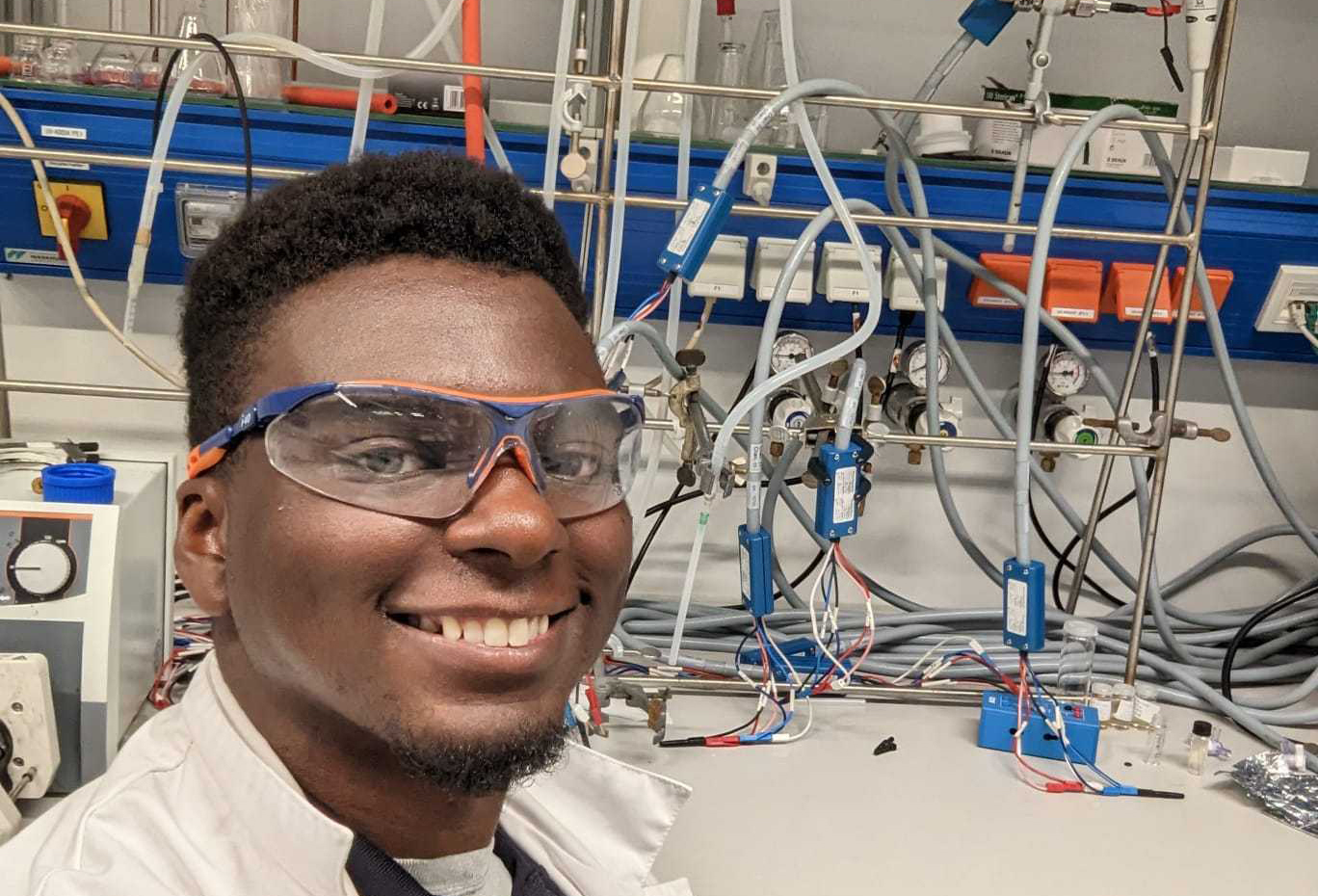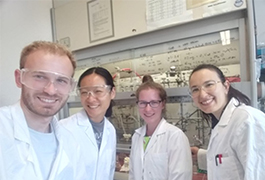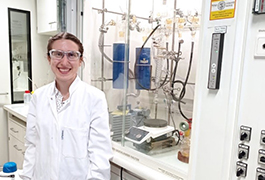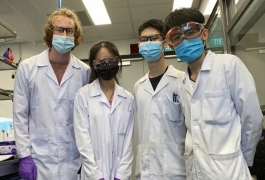GSU Student Uncovers Illegal Synthetic Cannabinoid in Over-the-Counter Vaping Pen
Vaping, or smoking e-cigarettes, is gaining popularity among young adults. According to a US Surgeon General report, just under 14% of 18-24 year-olds currently use e-cigarettes, and that number is increasing (even as use of conventional tobacco products decreases). Vaping devices heat a liquid to generate an aerosol, and the users inhale the vapor. The potential dangers of vaping are not yet fully understood, but Daniel Josey, a junior at Georgia Southern University, Armstrong Campus, in Savannah, is trying to change that.
Josey had heard about a vaping product called Magic Puff from friends who used it to inhale cannabidiol, or CBD. Unlike other marijuana components, CBD does not produce a “high,” and researchers are investigating its potential to treat such conditions as epilepsy, insomnia, and chronic pain.
The efficacy and long-term impact of CBD are still under investigation, and its use is regulated by the FDA. However, it can be obtained in supplements, especially in states that have legalized marijuana use.
While some users say CBD has a relaxing effect, Josey says the effects of Magic Puff described by friends were extreme: dissociation from reality, the feeling of intense intoxication, passing out, and even temporary psychosis and seizures in some users.
Convinced that there was something fishy going on, Josey set out to determine what’s really in Magic Puff. He presented his findings at the 2018 Southeastern Regional Meeting (SERMACS) in Augusta, Georgia.
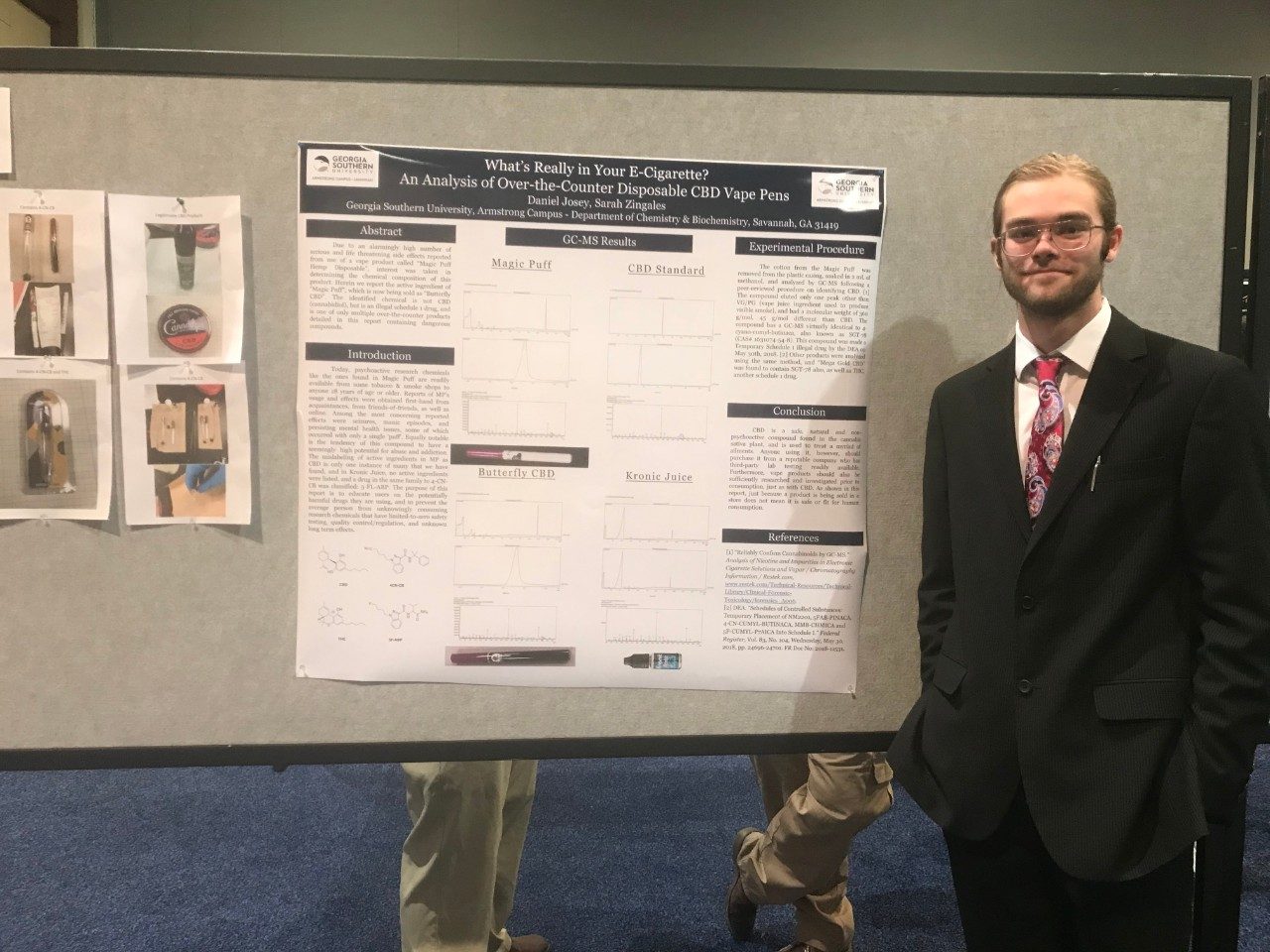
What led you to do research on e-cigarettes? What questions did you have going into your research?
As soon as I heard of Magic Puff, I decided I wanted to classify its true active ingredient to discourage its usage. The three main factors that led to my research were the rampant consumption of this product by young people, the form that the drug was available in, and its misrepresentation as having a safe and natural active ingredient.
Magic Puff and all products like it are sold as e-cigarettes or CBD products and are assumed to be safe by the average consumer. There is no way of knowing it contains a potent and dangerous drug without lab testing. There is no ingredients list, no disclaimer in bold, and no “sketchy” usage techniques (like having to smoke incense in a glass pipe as with Spice/K2 [types of “synthetic marijuana”]) to inherently discourage its use.
Walk us through your research. How did you determine that vaping was harmful/neutral/beneficial?
I found literature online that detailed characterization of CBD using GC-MS, gas chromatography–mass spectrometry. I carefully disassembled the vape pen and placed the cotton in a vial, which is where I suspected the active chemical was contained. I heard that kids were now breaking apart the pens and eating the cotton, as after a few days of using the drug, their tolerances had advanced to the point of needing to consume all of the drug at once to still get high rather than slowly vaping it over time.
I added 1mL of ethyl acetate to one sample, and 1 mL of methanol to another separate sample, and then transferred the solvents into GC-MS vials. Both samples gave the exact same result: one distinct peak with a molecular weight of 345.25 g/mol; 40 g/mol more than CBD. I ordered a CBD standard for the purpose of spiking to be 100% sure of my findings.
In the meantime, I posted my results on Reddit.com, which is where I found a lot of the reports of Magic Puff’s usage. The most amazing outcome of my post was that a Reddit user immediately recognized the GC-MS results and informed me it looked just like 4-cyano CUMYL-BUTINACA, also called SGT-78 [a synthetic cannabinoid illegally sold as a designer drug]. I compared my results to the stock GC-MS provided by Caymen Chemical, and sure enough, it was practically 100% identical. I had no doubt this was the compound in Magic Puff.
You found illegal drugs in the vaping device. This is significant. What do you plan to do with the information?
After finding SGT-78 in Magic Puff, I decided to test more products. I went to the store to purchase another sample of Magic Puff to confirm my findings, and see what other products were available. Magic Puff was no longer sold, and had been replaced with Butterfly CBD. The vape pens looked identical save for the different name and logo. I also purchased Mega Gold CBD, which was a similarly disposable vape cartridge. Butterfly CBD had a GC-MS indistinguishable from Magic Puff, with the only difference being it was now much more dangerous: Butterfly lied about its active chemical right on the package.
After testing Mega Gold CBD with the same procedure, I discovered it actually contained both SGT-78 and THC: both of which are Schedule 1 drugs.
I hope my research will help prompt strict regulations for all vape products and consumables sold in smoke shops and online, because the reality of adults, teenagers, and even children unknowingly using a dangerous and mind-altering drug is absolutely horrifying. Most of the products containing these drugs are sold as CBD, but one tested product, Kronic Juice, is sold simply as vape juice or flavoring for e-cigarettes, and contained a drug very similar and in the same family to Magic Puff’s: 5F-CUMYL-PINACA, also known as SGT-25.
Once I found out SGT-78 had been made illegal by a temporary DEA scheduling, I got in contact with my local DEA office and informed them of my findings. Unfortunately, they were not able to use my data to remove the products from stores and had to purchase their own samples and send them off for testing, which I was told is a rather lengthy process.
The glaring issue with testing individual products to prove they contain something illegal is that by the time the results come back, the products have already changed names and packaging to avoid detection by law enforcement. To fix this huge problem facing our society, regulations will have to be put in place to ban items intended for human consumption from being sold in stores and online without proper screening and safety testing.
Did you get any scientific or financial assistance? What role did professors, advisors, and/or peers play in helping you move your research forward?
I could not have done this research without the help of Dr. Sarah Zingales, who assisted me in running the GC-MS and developing a procedure, and without the permission of Dr. Nathaniel Shank, my research advisor under whom I study peptide nucleic acids and who allowed me to do this project on the side. I would also like to thank Georgia Southern University Armstrong Campus for the use of their instruments and laboratories, and for being very supportive of my project. I have quite a few hours invested in this venture, but for the most part, I obtained my results much more quickly than expected.
I found this research both incredibly important and time sensitive, as people I knew were actively becoming addicted to this drug. I wanted to get my results out as soon as possible to prove users of Magic Puff were indeed using something harmful, so I funded the research myself by charging the samples to my credit card and using my position as a lab technician to try and pay off my bill. As I got increasingly interesting results, I ended up testing seven different products; 5 of which indeed contained synthetic cannabinoids. I would have tested everything I could find, but my bill started getting a bit daunting.
What did you learn from presenting your research at SERMACS?
I had a wonderful time at SERMACS, and am very glad to have had the opportunity to present my findings there. I had the opportunity to meet with numerous scientists in both academic and professional settings through the career fair and graduate school fair, and even met with a professional in the industry whose company is beginning to investigate the potential of the cannabis-sativa plant and its active chemicals. I also got a chance to see a few posters on CBD and learned a few things that I could apply to my own talk.
The opportunity to present my research to many different people also prompted insight into my own project, and this was an unexpected but pleasant result. I found I was better able to effectively explain the purpose, scope, and ramifications of my project every time I presented it. One person asked if other unregulated products meant for human consumption, such as supplements for working out, could also be affected by this problem. This was a great point, and made me consider looking into that side of the coin as well.
Are you planning to pursue scientific research as a career or do you have other plans?
My goal is to attend graduate school and continue medicinal research. Drugs of all kinds and the ways they affect our society today is my passion. Specifically, I would like to minor in neurology and focus on medicinal research as it pertains to mental health, as well as continuing to attempt to influence drug policy and regulation. This project is a great example of the need for changes in U.S. drug policies. A major reason why people use Magic Puff and things like it is that the chemicals do not show up on drug tests, and they can be easily purchased at the store.
People have turned to “vaping” as an alternative to puffing on the real thing. But is that vapor you’re inhaling any safer than taking a drag on a cigarette? ACS Reactions examines what we know, and what we don’t, about e-cigarettes. Check out the video here: http://youtu.be/hcsvX7v-iCQ.

